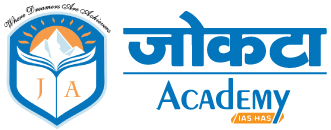The Forgotten Tongues of Himachal: Endangered Pahari Languages and the Tankri Revival
Himachal Pradesh, renowned for its snow-clad peaks, rushing rivers, and scenic beauty, is also home to a rich tapestry of cultures, oral traditions, and indigenous languages that have flourished for generations. Yet today, this vibrant linguistic heritage is under grave threat. Many oral Pahari languages are teetering on the edge of extinction — and with their disappearance, Himachal risks losing a vital piece of its cultural soul.
As the saying goes, “When a language dies, a world dies with it.” Unlike written languages, oral languages are sustained through spoken word — in lullabies, folk songs, rituals, and everyday exchanges. For the native communities of Himachal, these languages are not just a means of communication; they are vessels of ancestral wisdom, ecological understanding, social customs, and shared history. The fading of these languages is more than a linguistic setback — it is a cultural emergency that demands urgent attention.
What Are Pahari Languages?
“Pahari” literally means “of the mountains” — derived from the Hindi word Pahar. Pahari languages represent a group of Indo-Aryan languages spoken across the Himalayan belt, stretching from eastern Nepal to Jammu & Kashmir, and into parts of Pakistan.
These languages are broadly divided into three categories:
- Eastern Pahari – e.g., Nepali
- Central Pahari – e.g., Kumaoni and Garhwali
- Western Pahari – spoken mainly in Himachal Pradesh and parts of Jammu
While Eastern and Central Pahari languages like Nepali and Kumaoni have gained wider acceptance and recognition, it is the Western Pahari languages — primarily spoken in Himachal Pradesh — that face a dire threat of extinction.
Himachali Pahari Languages: Disappearing Voices
The Western Pahari or Himachali languages are spoken across diverse regions of Himachal such as Chamba, Kangra, Kullu, Mandi, Shimla, Sirmaur, and Bilaspur. These include:
- Mandeali
- Kullui
- Chambeali
- Mahasuvi
- Bilaspuri
- Sirmauri
- Kangri
- Bhattiyali
- Gaddi, among others
These languages were historically written in the Tankri (Takri) script, but over time, this script fell out of use.
Despite their vibrant oral literature, local songs, and folklore, these languages are rapidly fading. According to UNESCO, most Himachali Pahari languages are now classified as “definitely endangered” or “critically endangered”, with younger generations no longer learning them.
Tankri: The Vanishing Script of Himachal’s Heritage
The Tankri script is an essential part of Himachal’s linguistic heritage:
- Evolved from the Sharada script around the 10th–11th century CE.
- Used to write various Western Pahari languages, including Kangri, Gaddi, and Chambeali.
- Gradually replaced by Devanagari, especially during British colonial rule and post-independence language policies.
Tankri was not just a writing system; it was a cultural symbol. Its decline mirrored the diminishing status of local languages. However, there have been revival attempts:
- In 2021, a Public Interest Litigation (PIL) was filed in the Himachal Pradesh High Court urging the state to grant official recognition to Pahari (Himachali) and promote Tankri as a standard script.
- The High Court advised petitioners to collaborate with the Department of Language, Art, and Culture to develop a unified linguistic structure and revive the Tankri script.
A Lingering Struggle for Recognition
The movement to include Pahari (Himachali) in the Eighth Schedule of the Indian Constitution has been ongoing. Inclusion would mean legal status, government support, and funding for preservation and promotion. Though resolutions have been passed in the Himachal Pradesh Legislative Assembly and several PILs filed, the demand remains pending.
The disappearance of these oral languages would not just mark the loss of vocabulary. It would erase entire worldviews, oral histories, traditional ecological knowledge, and unique cultural expressions rooted in Himalayan life.
Why These Languages Are Disappearing
According to the Linguistic Survey of India: Himachal Pradesh (2022), over 90% of Himachalis speak a variant of Western Pahari, encompassing languages like Kangri, Mandeali, Mahasuvi, and Kullvi. Despite this widespread use, most of these are classified as “definitely endangered” by UNESCO — a stark warning that Himachal Pradesh’s rich oral traditions are at serious risk.
Are They Dialects or Distinct Languages?
The classification of Himachali Pahari languages as mere dialects of Hindi is both politically sensitive and linguistically contested. While official records often refer to them as dialects, many linguists, scholars, and native speakers argue otherwise. These languages have:
- Unique phonology and grammatical structures
- Distinct oral literature, folk narratives, and songs
- Strong regional identities rooted in historical kingdoms
Organizations like the People’s Linguistic Survey of India and UNESCO have acknowledged some of these as separate languages, some being “vulnerable” and others “definitely endangered.” Their lack of written scripts and dependence on oral transmission, however, makes them even more fragile in the digital, fast-paced world of today.
Understanding the Decline of Pahari Languages
The decline of Himachali Pahari languages is a result of intertwined social, cultural, educational, and policy-driven challenges. This decline hasn’t occurred overnight — it reflects decades of neglect, perception shifts, and systemic exclusion.
1. Educational Exclusion and Language Shame
The current education system in Himachal Pradesh marginalizes native languages by prioritizing Hindi and English as mediums of instruction.
- Local languages are not included in school curricula.
- No textbooks or learning material exist in Pahari dialects.
- Children are taught to associate Pahari with backwardness or illiteracy.
As a result, many students grow up unable to read or write in their mother tongue — and worse, they feel ashamed to speak it publicly.
2. Urbanization and Generational Disconnect
Economic migration to urban centres has broken the traditional linguistic chain between generations.
- Young people move to cities for better opportunities and adopt Hindi or English.
- Children grow up in mixed or non-Pahari environments.
- Native tongues are reduced to occasional use with grandparents, if at all.
This shift leads to a loss of fluency, relevance, and emotional connection with the language.
3. Script Abandonment: The Decline of Tankri
For centuries, the Tankri (Takri) script was used to write Himachali languages like Kangri, Gaddi, and Chambeali.
- British colonial policies and post-Independence reforms replaced Tankri with Devanagari.
- Devanagari is poorly suited to capture the phonetic richness of Pahari.
- Without a standardized, officially recognized script, it’s difficult to teach or digitally preserve these languages.
The decline of Tankri has weakened the written identity of these tongues.
4. The Prestige and Pressure of Hindi & English
Hindi and English are seen as the gateway to jobs, social respectability, and modern life.
- They dominate education, government recruitment, and digital media.
- Pahari is considered informal, rural, or even unnecessary.
This perceived inferiority leads families to actively discourage their children from learning or speaking it.
5. Lack of Official Recognition and Policy Support
Western Pahari languages remain excluded from the Eighth Schedule of the Indian Constitution.
- No budgetary allocation or preservation schemes
- No inclusion in official communication or education
- Community-led initiatives struggle due to lack of institutional backing
Without constitutional status, these languages continue to be overlooked in national and state agendas.
6. Media and Technological Neglect
Modern communication platforms rarely support or promote Himachali languages.
- No mainstream radio, TV, or YouTube content in Pahari dialects
- Very limited presence on OTT platforms, educational apps, or websites
- Lack of digital fonts and auto-correct tools for Tankri or Pahari
This digital invisibility makes it hard for younger generations to engage with their native language in daily life.
7. Cultural Homogenization and Globalization
A growing trend of cultural uniformity — driven by consumer culture, pop media, and global trends — has led to the erosion of regional uniqueness.
- Folk songs, festivals, and stories in Pahari are losing ground to Bollywood and social media trends.
- Traditional knowledge systems encoded in these languages are being forgotten.
A Call to Preserve Himachali Languages
The Himachali language is a treasure trove of cultural wisdom, traditional knowledge, and oral history. The fading of these languages is not just the loss of words — it is the erasure of worldviews, rituals, local ecology, and the soul of the region.
What Can We Do?
Even small efforts can create meaningful change:
- Speak your native dialect at home — especially with children
- Document stories, songs, and proverbs of your elders before they vanish
- Support initiatives to revive the Tankri script
- Push for the constitutional recognition of Pahari (Himachali) languages
- Encourage local schools and cultural bodies to host language days, workshops, and storytelling events
- Celebrate Language Through Arts & Culture: Organize folk festivals, theatre, and musical performances in native languages
The voices of Himachal are fading — but they don’t have to disappear. With collective will and cultural pride, we can ensure these languages live on for generations to come.



